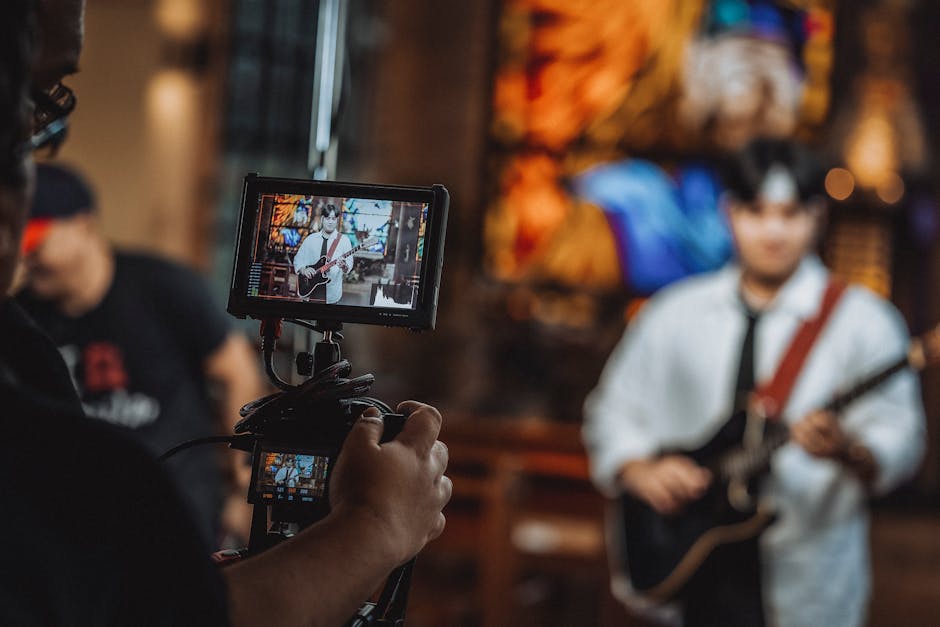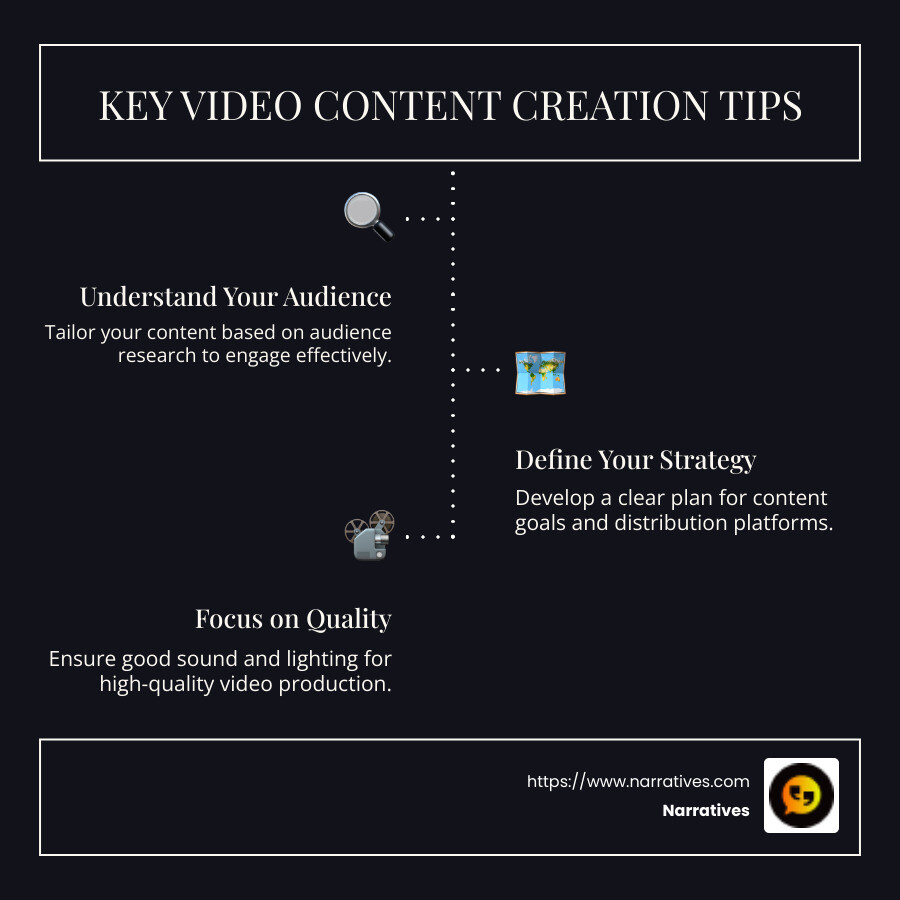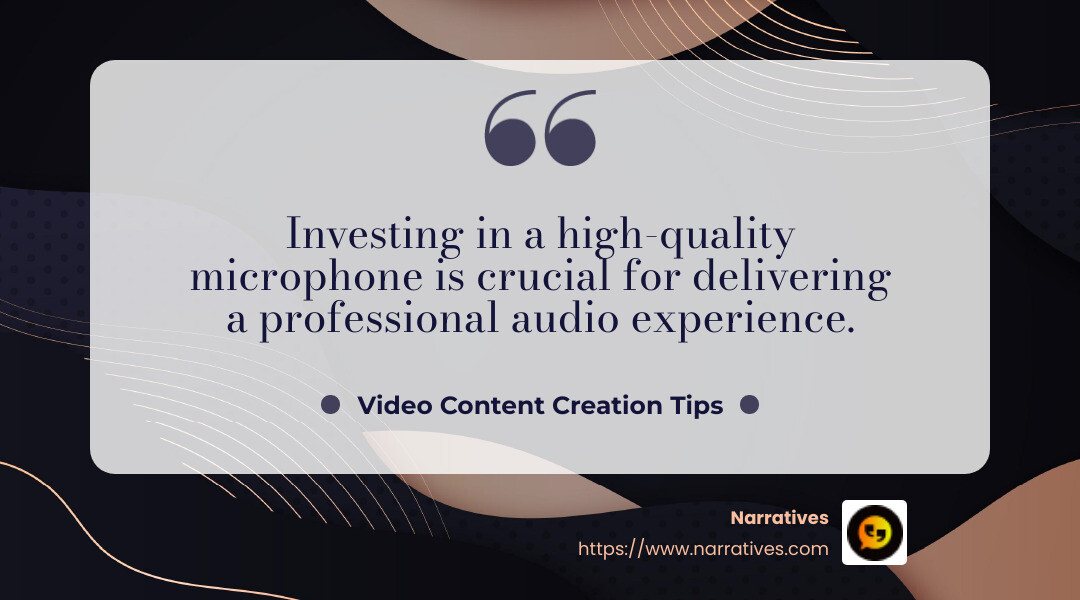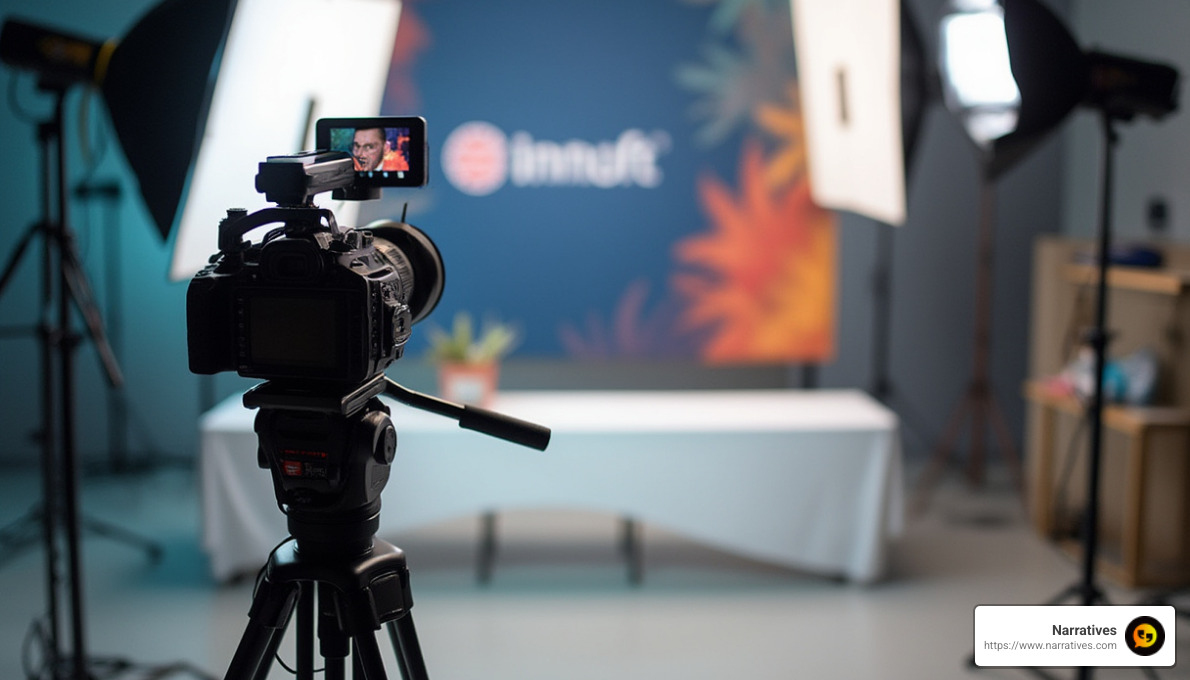Master the Art: Essential Tips for Video Content Creation

When it comes to video content creation tips, the digital landscape is buzzing with opportunities. Whether you're aiming to amplify your non-profit's mission or improve your brand's narrative, creating high-quality video content can be a game-changer. Here are some quick highlights:
- Understand your audience: Tailor your content to engage your audience effectively.
- Define your strategy: A clear video content strategy is key to achieving your goals.
- Focus on quality: Good sound and lighting can make a world of difference.
In today's world, video content is more than just a medium—it's a powerhouse of engagement and storytelling. Done right, it can lift your mission, resonate with viewers, and expand your reach. Whether through heartfelt testimonials, informative explainers, or captivating stories, video has the unique ability to create emotional connections and drive action.
Crafting a well-thought-out video content strategy is essential. It involves understanding your audience, defining your goals, and choosing the right platforms for distribution. This strategic approach ensures that each piece of content not only informs but also inspires, turning passive viewers into active supporters.

Know your video content creation tips terms:
Understanding Video Content Creation
Creating impactful videos is like telling a story, but with moving pictures and sound. To make a video that stands out, you need to follow a structured process. This process is divided into three main stages: pre-production, production, and post-production. Each stage plays a crucial role in shaping the final product.
Pre-Production
Pre-production is all about planning and preparation. Think of it as laying the groundwork for your video. Here’s what you need to focus on:
Define Your Objectives: Know what you want to achieve with your video. Are you educating, entertaining, or inspiring your audience?
Script and Storyboard: Write a script that conveys your message clearly. Then, create a storyboard to visualize the scenes.
Location and Resources: Choose the right location and gather the necessary equipment and props. This step sets the stage for a smooth production process.
Budget: Establish a budget to keep your project on track. This will help you avoid overspending and ensure you can complete your video as planned.

Production
This is where the magic happens. During the production phase, you capture your video footage. Here’s what to keep in mind:
Shoot High-Quality Footage: Use good cameras and microphones to ensure clear visuals and sound.
Lighting and Composition: Proper lighting can make a huge difference. Use techniques like the Rule of Thirds to improve video composition.
Directing: Guide your actors or subjects to bring out the best performance. Follow your storyboard closely to capture each scene effectively.
Sound Quality: Clear audio is crucial. Use external microphones to capture sound without background noise.
Post-Production
Once you have all your footage, it’s time to edit and polish your video during post-production. Here’s how to make your video shine:
Editing: Cut and trim your footage to create a cohesive story. Add transitions, effects, and text to improve the visual appeal.
Sound and Music: Integrate background music and sound effects to lift the mood. Make sure the audio levels are balanced.
Color Correction: Adjust the colors to make your video look more professional and visually appealing.
Final Touches: Add captions, titles, and credits. Ensure your video is accessible to a wider audience.
By mastering these stages of video content creation, you can produce videos that not only capture attention but also leave a lasting impact. Whether you're working on a short clip for social media or a detailed documentary, understanding each phase will help you create content that resonates with your audience.
Video Content Creation Tips
Creating a video that captivates your audience requires careful planning and attention to detail. Here are some essential video content creation tips to guide you through the process.
Planning and Preparation
The foundation of any successful video is solid planning. Start by developing a clear script or outline. This will serve as your roadmap. Identify the key points you want to communicate. Knowing your core message helps keep your video focused and aligned with your marketing goals.
Gather Resources: Make a list of all necessary equipment and props. This might include cameras, microphones, lighting kits, and any specific items related to your video's theme. Having everything ready in advance minimizes disruptions during filming.
Location Scouting: Choose a location that complements your video’s theme. Make sure it's accessible, has good lighting, and is free from excessive noise.
Sound Quality
Sound is just as important as visuals. Poor audio can turn viewers away faster than a blurry image. Invest in a quality microphone to capture clear and crisp audio. External microphones are usually better than built-in ones, especially for reducing background noise.
Lighting and Composition
Lighting can make or break your video. Proper lighting improves the mood and clarity of your footage. Whether shooting indoors or outdoors, consider the intensity and direction of light. Soft, diffused lighting often works best for a natural look.
Framing and Composition: Use techniques like the Rule of Thirds to structure your shots. This involves dividing your frame into nine equal parts and placing key elements along these lines or their intersections. This technique helps create a balanced and visually appealing image.
Experiment with Angles: Different angles can add depth and interest to your video. Try shooting from various perspectives to find what best highlights your subject.
By focusing on these aspects of planning, sound quality, and lighting, your video content will be more engaging and professional. These video content creation tips are fundamental to producing videos that not only look good but also resonate with your audience.
Next, we'll explore the essential tools needed to bring your video vision to life.
Essential Tools for Video Content Creation
Creating high-quality video content isn't just about hitting record. It requires the right tools to ensure your videos look and sound professional. Here, we’ll cover the key equipment you need: video cameras, stabilizers, and microphones.
Video Cameras
The heart of any video project is the camera. A good camera captures clear and detailed footage, making your content stand out. According to TechRadar, some top-notch options include the Panasonic Lumix GH6 and Sony A7S III. These cameras are known for their excellent image quality and versatility, suitable for various filming conditions.
If you're on a budget, many modern smartphones can shoot high-definition 4K videos. This makes them a viable option for social media content or projects where portability is key.
Stabilizers
Nobody likes shaky footage. It can distract viewers and diminish the quality of your video. Stabilizers like gimbals or Steadicams are invaluable for keeping your shots smooth and cinematic. They use motors and sensors to counteract unwanted movement, ensuring your footage remains steady.
Another simple yet effective option is a tripod. It provides a stable base for your camera, perfect for static shots or interviews. For those who prefer handheld shooting, many cameras and smartphones come with built-in image stabilization features. These can help reduce shake, especially in dynamic filming situations.
Microphones
Sound quality can make or break your video. Even with stunning visuals, poor audio can quickly turn viewers away. Investing in a quality microphone is essential. Rode SmartLav+ and Joby Wavo Plus are excellent choices, as noted by Wired. They capture clear audio and reduce background noise, making your content more professional.
Choose your microphone based on your needs. Lavalier mics are ideal for interviews, while shotgun mics are great for capturing sound from a distance. Always test your audio levels before recording to ensure balance and clarity.
By equipping yourself with the right tools—cameras, stabilizers, and microphones—you set the stage for creating engaging and high-quality video content. These tools are essential for anyone serious about video production, helping to lift your work and connect with your audience more effectively.
Next, we'll dive into video content creation tips specifically custom for non-profits, focusing on storytelling and community-driven content.
Video Content Creation Tips for Non-Profits
Creating video content for non-profits is a unique challenge. It's not just about showcasing your cause but also about connecting with your audience on a deeper level. Here are some essential video content creation tips to help you achieve that.
Storytelling
Storytelling is at the heart of effective video content. For non-profits, it’s crucial to weave narratives that resonate with viewers. Start by identifying the core message you want to convey. Is it about the impact of your work or a call to action for support?
A compelling story often involves real people. Share personal experiences or testimonials from those your organization has helped. This creates an authentic connection with your audience. According to Infobrandz, 72% of customers prefer to learn about a service through video content, making storytelling a powerful tool for engagement.
Emotional Resonance
Emotional resonance is key to making your videos memorable. Use visuals and music to evoke emotions. A simple, heartfelt moment can inspire empathy and action. It's not just about what you say but how you make people feel.
Consider using visual storytelling techniques to improve your message. Relevant images or clips can amplify the emotional impact. For instance, showing the before-and-after effects of your work can be incredibly powerful. This approach not only informs but also motivates viewers to get involved.
Community-Driven Content
Community-driven content is about highlighting the collective effort behind your cause. Showcase volunteers, donors, and community partners in your videos. This not only acknowledges their contributions but also encourages others to join.
Platforms like YouTube and Instagram are excellent for sharing community-focused content. You can create playlists of short videos that tell different parts of your story or highlight various projects. HubSpot’s use of playlists for short, engaging content is a great example of how to keep viewers coming back for more.
Short-form content is king. According to a NogenTech report, the rise of TikTok and Instagram Reels shows the demand for bite-sized, impactful videos. Use these platforms to share quick updates or success stories, keeping your audience engaged without overwhelming them.
By focusing on storytelling, emotional resonance, and community-driven content, non-profits can create videos that not only inform but also inspire action. These elements are crucial for building a strong connection with your audience and driving meaningful engagement.
Next, we'll address some frequently asked questions about video content creation tips, including how to define your target audience and the best video formats for social media.
Frequently Asked Questions about Video Content Creation Tips
How to define your target audience?
Defining your target audience is crucial for creating effective video content. Start with audience research. Use tools like surveys, social media insights, and website analytics to gather data about your viewers. Look for patterns in demographics, interests, and behaviors.
Once you have this data, create a detailed profile of your ideal viewer. Consider their interests and the problems they need solving. This helps tailor your content to meet their needs, increasing engagement and effectiveness.
What are the best video formats for social media?
Social media platforms thrive on different types of content. Here's a quick guide to help you choose the right format:
Short-Form Video: Platforms like TikTok and Instagram Reels are perfect for quick, engaging content. These videos are often under a minute and are ideal for capturing attention in a digital world.
Live-Action: This format works well for platforms like Facebook and YouTube. Live-action videos can include interviews, behind-the-scenes footage, or real-life demonstrations, providing an authentic connection with viewers.
Animation: Animated videos are great for explaining complex ideas in a simple way. They're highly shareable and work well on platforms like YouTube and LinkedIn. Animation can simplify complex messages, making them more digestible.
How to promote video content effectively?
Promotion is key to ensuring your video content reaches its intended audience. Here are some strategies:
Multi-Channel Promotion: Don't limit yourself to one platform. Share your videos across multiple channels to maximize reach. This includes social media, email newsletters, and your website.
Social Media: Use native uploads on platforms like Facebook and Instagram for better engagement. Share snippets or teasers to drive interest and link to the full video.
SEO Optimization: Optimize your video titles, descriptions, and tags with relevant keywords to improve searchability. This helps your videos rank higher in search results on platforms like YouTube, increasing visibility.
By focusing on these strategies, you can effectively promote your video content and ensure it reaches the right audience.
Next, we'll explore essential tools for video content creation, including cameras, stabilizers, and microphones.
Conclusion
In our journey through video content creation, we have emphasized the power of storytelling and its ability to resonate deeply with audiences. At Narratives, we believe in the transformative impact of digital storytelling, especially for non-profits and purpose-driven organizations. By elevating underrepresented voices, we help these groups share their unique stories in ways that inspire action and build trust.
Non-profit partnerships are at the heart of what we do. We collaborate closely with organizations to craft video content that not only highlights their impact but also connects emotionally with viewers. This approach not only boosts visibility but also fosters a sense of community and engagement.
Digital storytelling is more than just a trend; it's a powerful tool for change. By focusing on video content creation tips and leveraging effective strategies, non-profits can amplify their message and reach wider audiences. Whether it's through authentic testimonials, behind-the-scenes glimpses, or compelling explainer videos, the goal is to create content that is both engaging and meaningful.
As we continue to explore the possibilities of video content, we invite you to join us in this journey. Together, we can create stories that not only inform but also inspire and drive positive change in the world.



